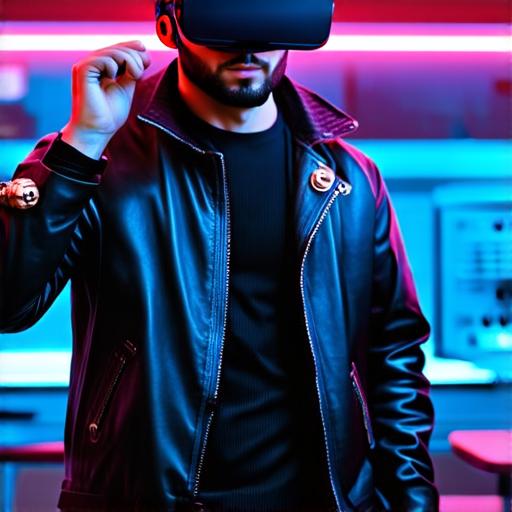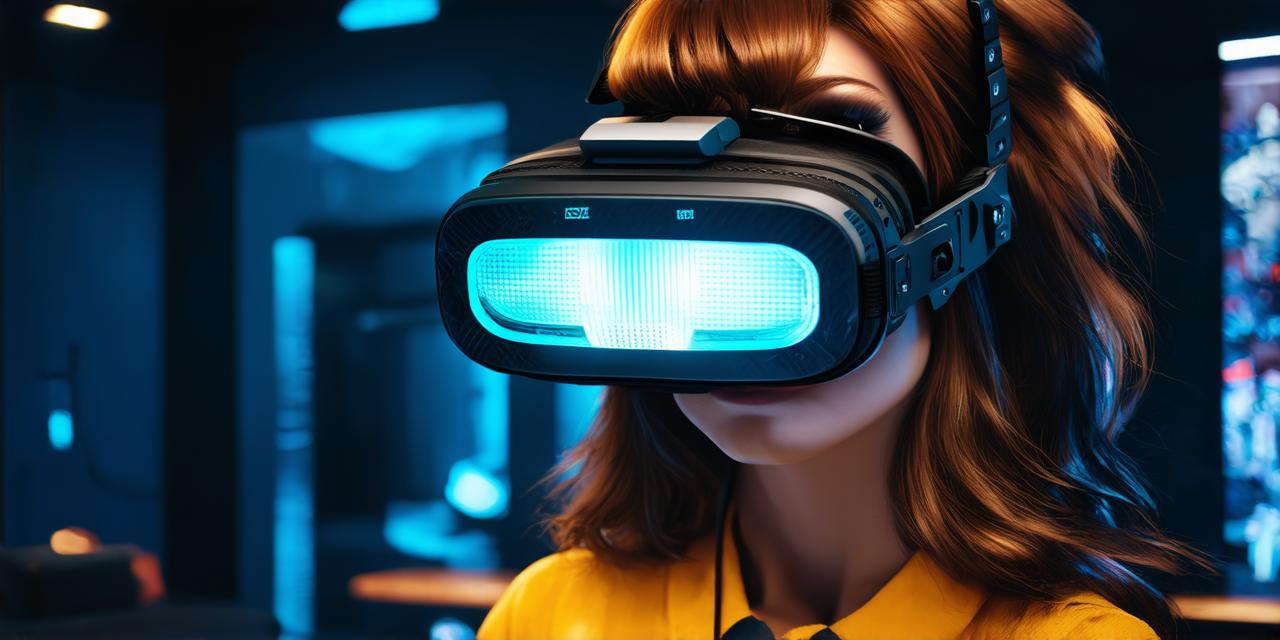The Early Days of Virtual Reality: A Brief History
Virtual reality (VR) technology has come a long way since its origin in the 1950s. From its humble beginnings to its current status as a burgeoning industry, VR has captured the imagination of people around the world.
The Inception of VR
Virtual reality technology has been around for over 60 years, dating back to the 1950s when Ivan Sutherland created the first virtual reality headset called the “Sword of Damocles”. The device used a projector and two mirrors to create an illusion of being in a three-dimensional space. This was the beginning of VR as we know it today.
The First Commercial VR System: The Head-Mounted Display (HMD)
In 1968, William Higinbotham developed the first commercial virtual reality system called “The Sword of Destiny”. It was a head-mounted display (HMD) that used a projector to display images onto a screen. However, it lacked the tracking capabilities that are now common in modern VR systems. Despite this, The Sword of Destiny was the first commercial virtual reality system and marked the beginning of VR as a mainstream technology.
The Birth of Modern Virtual Reality: The 1980s and 1990s
The 1980s and 1990s saw significant advancements in virtual reality technology, with the development of more advanced HMDs and tracking systems. One of the most notable developments was the creation of the first VR game, “MazeGame3D” by Thomas Zimmerman in 1984. This marked a significant milestone in VR as it showed that the technology could be used for more than just simulations and training.
The Turning Point: The Launch of Oculus Rift
In 2012, the launch of the Oculus Rift marked a turning point for virtual reality technology. The device was the first consumer VR headset to gain widespread attention and popularity. It featured advanced tracking capabilities and a high-resolution display, which allowed users to experience virtual environments in a more immersive and realistic way. This paved the way for VR to become a mainstream technology and opened up new possibilities for its use.
The Creators of Virtual Reality
Ivan Sutherland is considered the father of virtual reality. He created the first virtual reality headset called the “Sword of Damocles” in the 1950s. His work laid the foundation for VR and showed that it was possible to create immersive virtual environments.
William Higinbotham is also known as the father of virtual reality, although he created The Sword of Destiny in 1968, several years after Sutherland’s work. Despite this, Higinbotham’s work was groundbreaking and marked the beginning of VR as a mainstream technology.

Thomas Zimmerman is known for creating the first virtual reality game, “MazeGame3D”, in 1984. This game showcased the potential of VR as a platform for entertainment and opened up new possibilities for its use.
Advancements in Virtual Reality Technology
Virtual reality technology has come a long way since its early days, with advancements in HMDs, tracking systems, displays, and software leading to more immersive and realistic virtual experiences. Some of the key advancements include:
- Wireless connectivity: Wireless connectivity has made it possible for users to move around freely while using VR headsets. This eliminates the need for cables and allows for more natural and fluid movements.
- High-resolution displays: Advances in display technology have allowed for higher resolution displays, which improve the sense of presence and immersion in virtual environments.
- Improved tracking systems: Improvements in tracking systems have made it possible for VR to track more accurately and reliably, allowing for more realistic interactions with virtual objects.
- Motion sickness prevention: Advances in motion tracking and software have helped reduce the incidence of motion sickness in VR users. This is important as it can be a barrier to adoption for some people.
The Future of Virtual Reality
As virtual reality technology continues to evolve, there are several trends and predictions that are shaping the industry. Some of these include:
- Wireless VR headsets: Wireless VR headsets have become more common and are expected to be even more prevalent in the future. This will make it easier for users to move around and interact with virtual environments.
- Augmented Reality (AR): Augmented reality, which overlays digital information onto the real world, is gaining traction in a variety of industries, including gaming, education, and healthcare. AR technology has the potential to revolutionize the way we interact with virtual reality experiences and could be a major driver of future VR innovation.
- Virtual Assistants: Virtual assistants such as Alexa, Siri and Google Assistant are becoming more prevalent in our daily lives, and it is expected that they will play an increasingly important role in the virtual reality industry. They can be used to control various aspects of the virtual environment and interact with virtual objects.
- VR for education and training: Virtual reality has already been used in education and training, but it is expected to become more prevalent in these areas as the technology continues to improve. It can provide a safe and controlled environment for students to learn and practice new skills.
Conclusion
In conclusion, virtual reality technology has come a long way since its origin, and it is expected to continue to evolve and shape our lives in new and exciting ways. As we look to the future, it’s clear that virtual reality will be an integral part of our daily lives, whether for entertainment, education, or training purposes.
